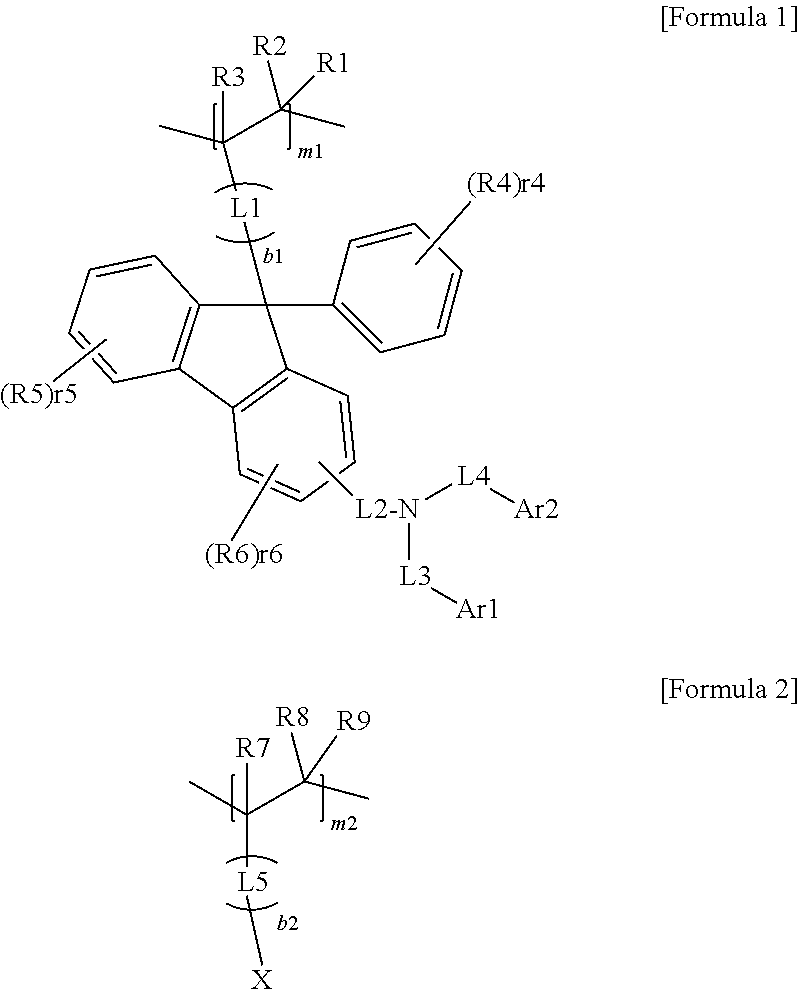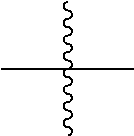Polymer, coating composition comprising same, and organic light emitting diode using same
a technology of organic light emitting diodes and coating compositions, which is applied in the direction of coatings, solid-state devices, semiconductor devices, etc., can solve the problems of difficult to manufacture organic light emitting devices with high efficiency and a long service life, and affecting the light efficiency etc., to achieve excellent thermal and optical stability, improve light efficiency, and reduce the driving voltage of organic light emitting devices
- Summary
- Abstract
- Description
- Claims
- Application Information
AI Technical Summary
Benefits of technology
Problems solved by technology
Method used
Image
Examples
preparation examples
Preparation Example 1. Synthesis of Intermediate
[0265](1) Synthesis of Intermediate 3
[0266]
[0267]2-bromo-9-fluorenone (1) (20.2 g, 60 mmol) was put into a flask and dissolved in anhydrous tetrahydrofuran (200 mL), and then the flask was put into an ice-water bath. Phenylmagnesium bromide (3 M in ether, 30 mL, 90 mmol) was slowly put thereinto, and the resulting solution was stirred at 0° C. for 1 hour. The reaction was stopped with NH4Cl (aq), and the product was extracted with diethyl ether and water. After the organic layer was collected, the organic layer was dried using MgSO4 and filtered. The filtrate was dried by a vacuum rotary concentrator to remove the organic solvent, and the residue was column purified to obtain 21.8 g (yield of 83%) of Intermediate 2.
[0268]After Intermediate 2 (16.6 g, 40 mmol), phenol (18.8 g, 200 mmol), and methanesulfonic acid (57 mL) were put into a round-bottom flask, the resulting mixture was stirred at 50° C. for 3 hours. Distilled water (57 mL) w...
synthesis example 2
r A
[0308]
[0309]After Intermediate 6 (1 g) and 3-vinylbicyclo[4.2.0]octa-1,3,5-triene (34 mg) (manufactured by Aldrich Chemical Co., Ltd.), and azobisisobutyronitrile (6.5 mg) were put into a round-bottom flask and then the resulting mixture was put into anhydrous toluene (8 mL) under nitrogen atmosphere, the resulting mixture was stirred at 60° C. for 2 hours. After the reaction was terminated, a precipitate precipitated in ethanol was filtered and washed with ethyl acetate, and then the obtained solid was dried to obtain 740 mg (yield of 74%) of Polymer A. Mn=35,492, Mw=92,016
preparation example 3
B
[0310]
[0311]620 mg (yield of 62%) of Polymer B was obtained by performing the experiment in the same manner as in the method of synthesizing Polymer A, except that Intermediate 11 was used instead of Intermediate 6. Mn=26,248, Mw=49,381
PUM
| Property | Measurement | Unit |
|---|---|---|
| boiling point | aaaaa | aaaaa |
| glass transition temperature | aaaaa | aaaaa |
| concentration | aaaaa | aaaaa |
Abstract
Description
Claims
Application Information
 Login to view more
Login to view more - R&D Engineer
- R&D Manager
- IP Professional
- Industry Leading Data Capabilities
- Powerful AI technology
- Patent DNA Extraction
Browse by: Latest US Patents, China's latest patents, Technical Efficacy Thesaurus, Application Domain, Technology Topic.
© 2024 PatSnap. All rights reserved.Legal|Privacy policy|Modern Slavery Act Transparency Statement|Sitemap



